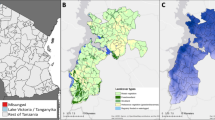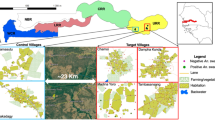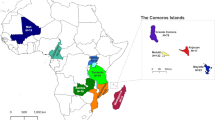Abstract
A FEATURE of interest in the transmission of malaria in the Pare area of Tanganyika, before residual spraying, was the low sporozoite rate in A. gambiae, infections of less than 1 per cent normally occurring. Two factors thought to contribute to the low sporozoite-rate were facultative feeding on cattle, and a low survival-rate in the vector1,2. A further possibility, that could not be excluded, was that the local strain of A. gambiae was also relatively resistant to infection or exhibited some innate difference in behaviour that reduced its chance of acquiring an infection, compared with strains in other areas. The existence of a low sporozoite-rate in salt-water A. gambiae on the humid coast of Tanganyika3 gave rise to speculation as to whether the presence of saline soils in the Pare area was not associated there also with the low sporozoite-rate.
This is a preview of subscription content, access via your institution
Access options
Subscribe to this journal
Receive 51 print issues and online access
$199.00 per year
only $3.90 per issue
Buy this article
- Purchase on SpringerLink
- Instant access to full article PDF
Prices may be subject to local taxes which are calculated during checkout
Similar content being viewed by others
References
Gillies, M. T., W.H.O. Conf. on Malaria in Africa, W.H.O./Mal./132, Lagos Conf./17 (1955).
Draper, C. C., and Smith, A., Trans. Roy. Soc. Trop. Med. Hyg., 51, 137 (1957).
Muirhead-Thomson, R. C., “Mosquito Behaviour in relation to Malaria Transmission and Control in the Tropics” (Arnold, London, 1951).
Sinton, J. A., and Kehar, N. D., Ind. J. Med. Res., 18, 1 (1930).
Ribbands, C. R., Ann. Trop. Med. Parasit., 38, 85 (1944).
Author information
Authors and Affiliations
Rights and permissions
About this article
Cite this article
SMITH, A., VAIL, J. Relationship between Salinity and Breeding of Anopheles gambiae in North-Eastern Tanganyika. Nature 183, 1203–1204 (1959). https://doi.org/10.1038/1831203a0
Issue date:
DOI: https://doi.org/10.1038/1831203a0



